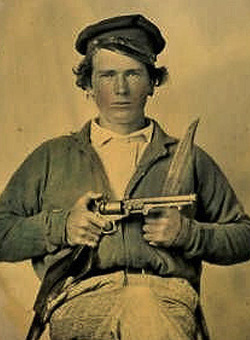
Please send all Checks and Money orders to :
Dave Taylor P.O. Box 87 Sylvania, OH 43560
419-842-1863
Click Here to E-mail Us!
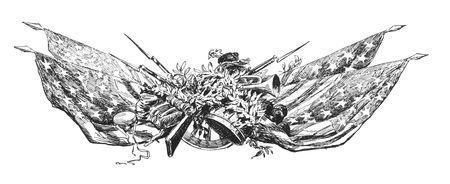
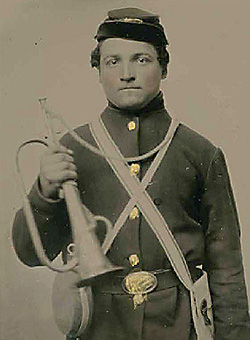
July 2019 – First List
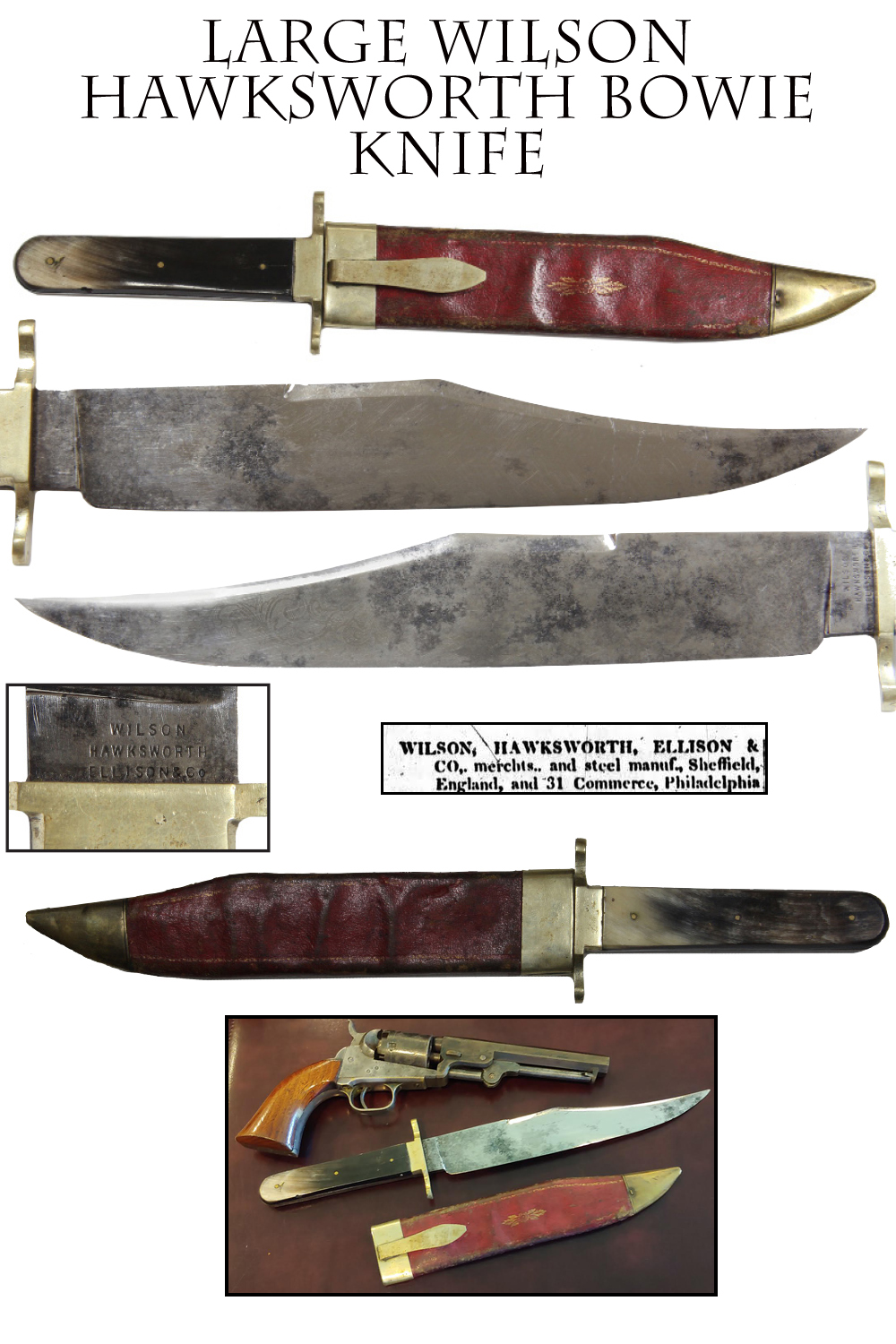
19-07-122…LARGE WILSON, HAWKSWORTH, ELLISON & CO. BOWIE KNIFE…
A man-size, large and handsome classic form Bowie knife measuring over a foot long. The swept point on this one is as handsome as a knife blade gets. Founded in 1825 by Wilson and Hawksworth, the company was one of the first Sheffield firms to establish a reputation in the U.S. In 1846 Joseph Ellison became their American representative added his name to the company title. I show an 1854 notice of the firm in a Philadelphia city directory. The blade is a classic early Bowie form with a dramatic, sweeping clipped point and false edge that extends up along the curve of the clip point and onto the spine of the blade for a distance. The blade has a good point and no nicks, just a few light scratches, but no signs of cleaning. Overall excellent condition. The firm name, WILSON / HAWKSWORTH / ELLISON & Co appears in crisp lettering on the left ricasso. The blade at first appears plain, but there are some faint traces of floral etching at the left tip.
The scabbard is actual red Morroccan leather with a gilt blind stamp of a floral spray on the right, along with a gilt edge border that is rubbed along the bottom. The left has the same border, though more rubbed. The scabbard tip and throat appear to be actual silver with the elongated belt hook being German Silver. The grips are polished horn, fastened with three pins and in excellent condition with no chipping. This is a truly impressive Bowie of classic form. The Colt pocket revolver is shown for size reference. Perfect for Gold Rush or Military display. $2,250.00 SOLD
Call us @ 419-842-1863
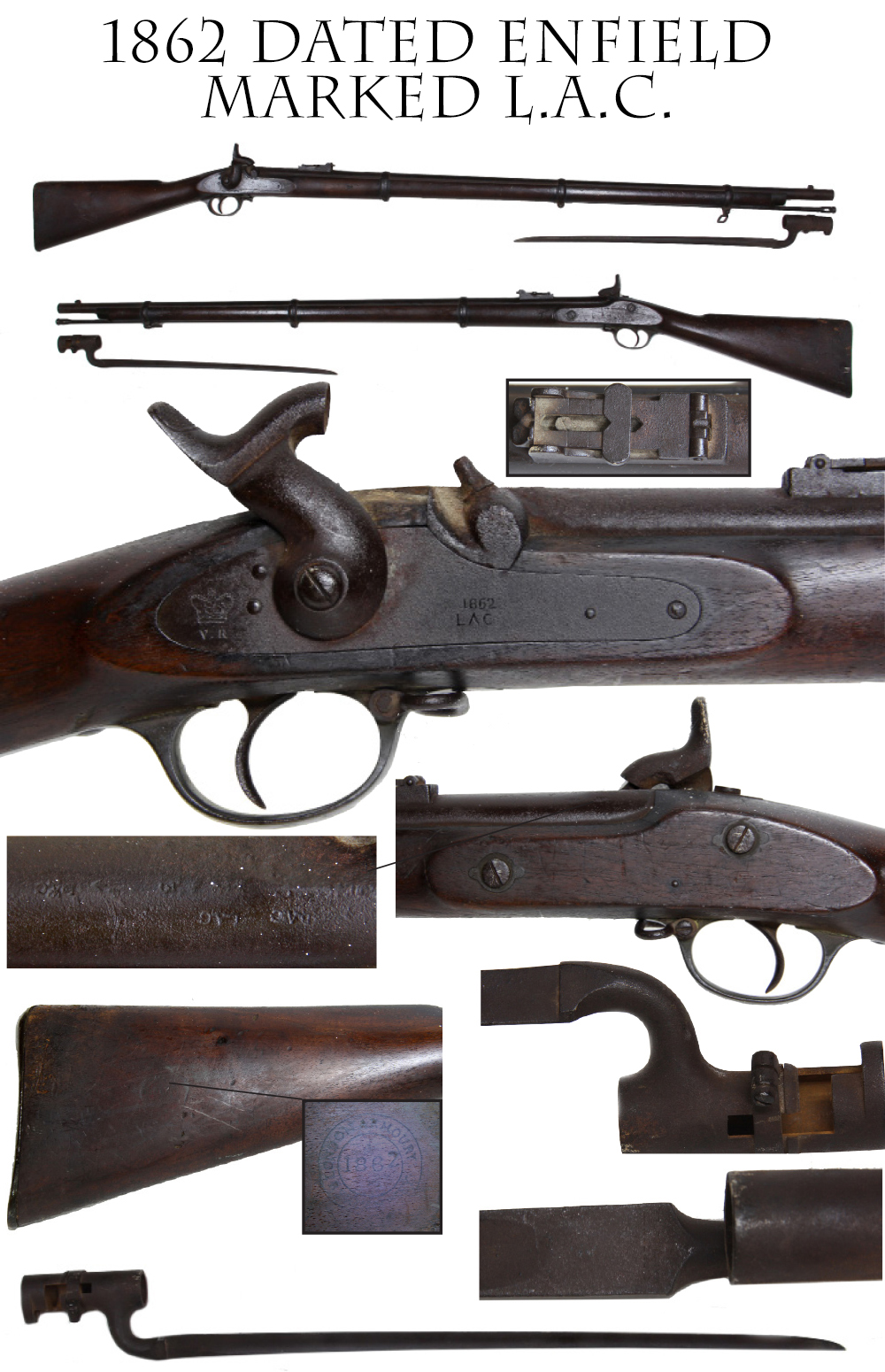
19-07-123… 1862 DATED LONDON ARMOURY COMPANY ENFIELD WITH BAYONET LIKELY CONFEDERATE USED: An untouched, literally fresh out-of-the-attic, British P1853 Enfield Rifle Musket made by the London Armoury Company, dated 1862. To my knowledge LAC supplied Enfields only to the Confederacy or the British army. Though it is possible some were issued to Yankees after being confiscated by the blockade. Only a few thousand of the company’s rifles made it into the commercial market in 1861 due to contracts with the British government. The situation loosened up by the middle of 1862, but LAC guns are still considered scarce, and especially so with an American connection.
This rifle surfaced in Michigan and has the crusty attic brown patina we love in an untouched gun. Unquestionably Civil War used. The lockplate is the typical, plain London Armoury Company plate with no border line and a hammer without side “feathers.” Forward of the hammer is an 1862 date over a simple L.A.C. and aft of the hammer, a crown over V.R. The lock screw escutcheons are the correct L.A.C. types with rounded wings. The Crown over V.R. is found on all LAC Enfields, not just English issued guns like the Tower marked rifles.
Like the bolster and breech, the lock plate has a fine spattering of salt and pepper pitting and some raised crust. The long-range rear sight, with leaf and elevator is in place and in the same condition. The left breech of the barrel shows at least three small “L.A.C.” stampings along with fainter conventional barrel proof marks including and inspector’s number. The front sight, bands, and swivels are all in place. Mechanics are good.
The brass fittings have a deep, aged patina. The wood is very good, still tight to the metal, with decent edges around the lock and just normal handling dings. Still visible on the right butt flat is the London Armoury Company roundel with a matching 1862 date. There is a little burning next to the nipple from the percussion caps. With this comes the Enfield bayonet found with the gun. The bore has rifling but is as dark and crusty as a coal mine.
This gun has a great, attic look. I personally believe it was in southern hands for service and in Yankee hands as a war trophy. In 45 years I cannot recall ever having an LAC Enfield documented as being issued to a Yankee. This one has a real Confederate flavor. $2,250.00 SOLD
Call us @ 419-842-1863

19-07-124.. M1816 VALLEY FORGE MUSKET IN ORIGINAL FLINT: Scarce 1830-dated W.L. Evans contract Model 1816 Musket from his 1829 contract. Flayderman records only dates of 1826-1828 and 1832-33 on Evans contract 1816s. These dates result from two different contracts (taking over an 1825 contract from Rogers and receiving an 1832 contract.) Flayderman mentions no muskets dated 1829-1831 and seems unaware that Evans had a June 1829 contract as well for 2250 muskets that produced deliveries in the years of 1829-1831. 1,800 were delivered in 1830. This is a nice example of the 1816 Type II musket he supplied under that 1829 contract. The lock markings are crisp and visible: 1830/US to the rear of the hammer and W.L. Evans/eagle/V.Forge forward. The barrel inspection marks are likewise sharp: and LS inspector stamp, a US, and a “P” proof mark. The wood on this is very good- no cracks or large divots. The edges are very good around the lock. The metal to wood is generally tight, though with just the slightest of age gaps around the breechplug tang. There are some minor handling dings and scratches, nothing bad. On the right butt flat there are traces of writing, likely an owner’s name, but they can’t be made out and tend to blend in with the color. The lock shows a little light gray in areas covered by the hammer, but is mostly brown with a few traces of smoky mottling. There is some light pitting around the touchhole, just enough to show it was used. Some pitting to the ramrod. The buttplate is smooth metal. The screw slots are not jagged and the some screw heads show a bit of color. Bands, springs, swivels, rod and front sight/bayonet stud are all in place. The muzzle shows lighter gray from having a bayonet on it. The rest of the barrel is a smooth deep plum brown. Nearly 200 years old now. A real American flintlock. $1,650.00 SOLD
Call us @ 419-842-1863

19-07-125… 18th CENTURY FLINTLOCK PISTOL WITH WONDERFULLY ENGRAVED MONSTERS :
Call us @ 419-842-1863
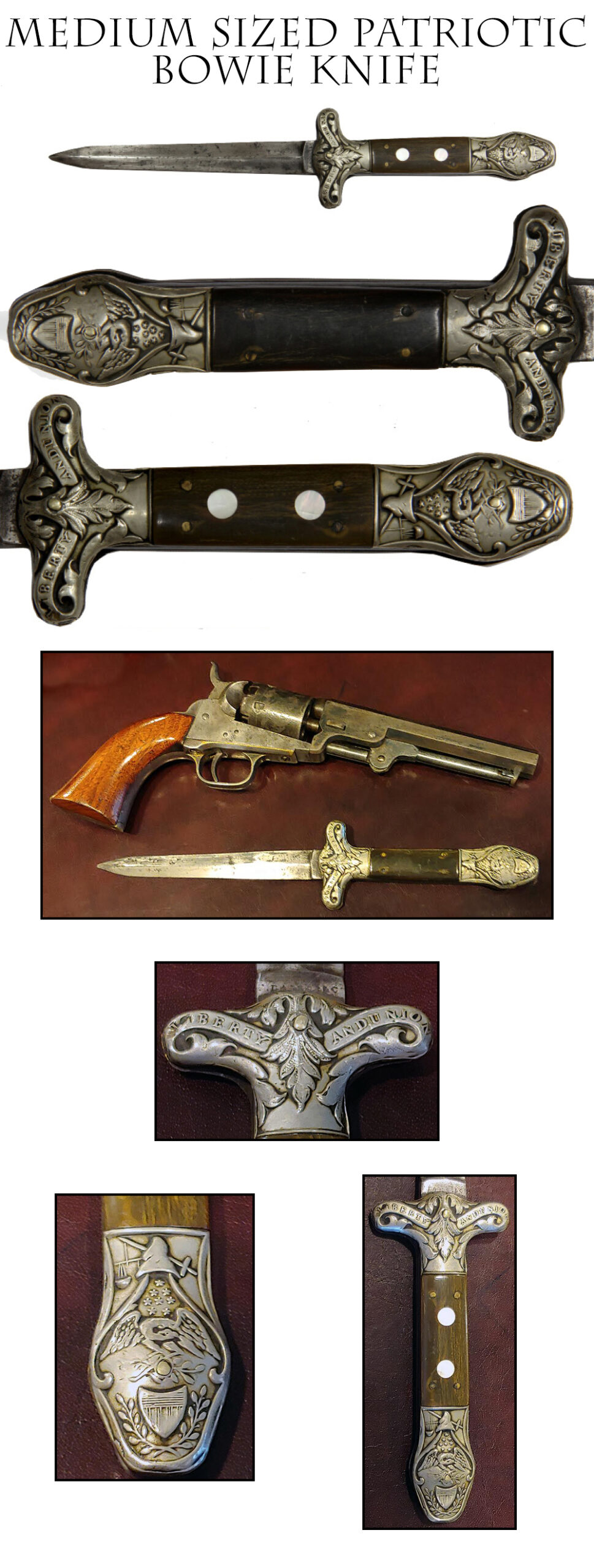
19-07-127 MEDIUM SIZED PATRIOTIC BOWIE KNIFE Dating from the early days of the Civil War, this double-edged spearpoint Bowie is loaded with patriotic motifs. The silver cross guard is cast with a floral scroll on either side reading “LIBERTY AND UNION” when held with the point up. Not only does the scroll end by turning into leaves, a central branch hangs down over the middle of the scroll, decending from a spray above. The pommel cap picks up the theme with a wreath at the very tip underneath and American shield, above which an eagle spreads its wings and clutches another branch. Over the eagle is a group of stars, above which is a liberty cap superimposed on the sword and scales of Justice. These motifs appear on both sides of the fittings. The grip itself consists of polished horn slabs secured with pins, one of the slabs having two inset mother-of-pearl roundels.
The blade shows honest wear and has good edges and a good point. The metal is smooth and in color a mix of lighter steel gray and darker gray. The blade has a central ridge and short ricasso that bears a maker’s name that is just a bit too worn to make out. A truly wonderful Civil War knife. I personally love these patriotic knives. 10 inches overall length. No sheath. $1,250.00
Call us @ 419-842-1863
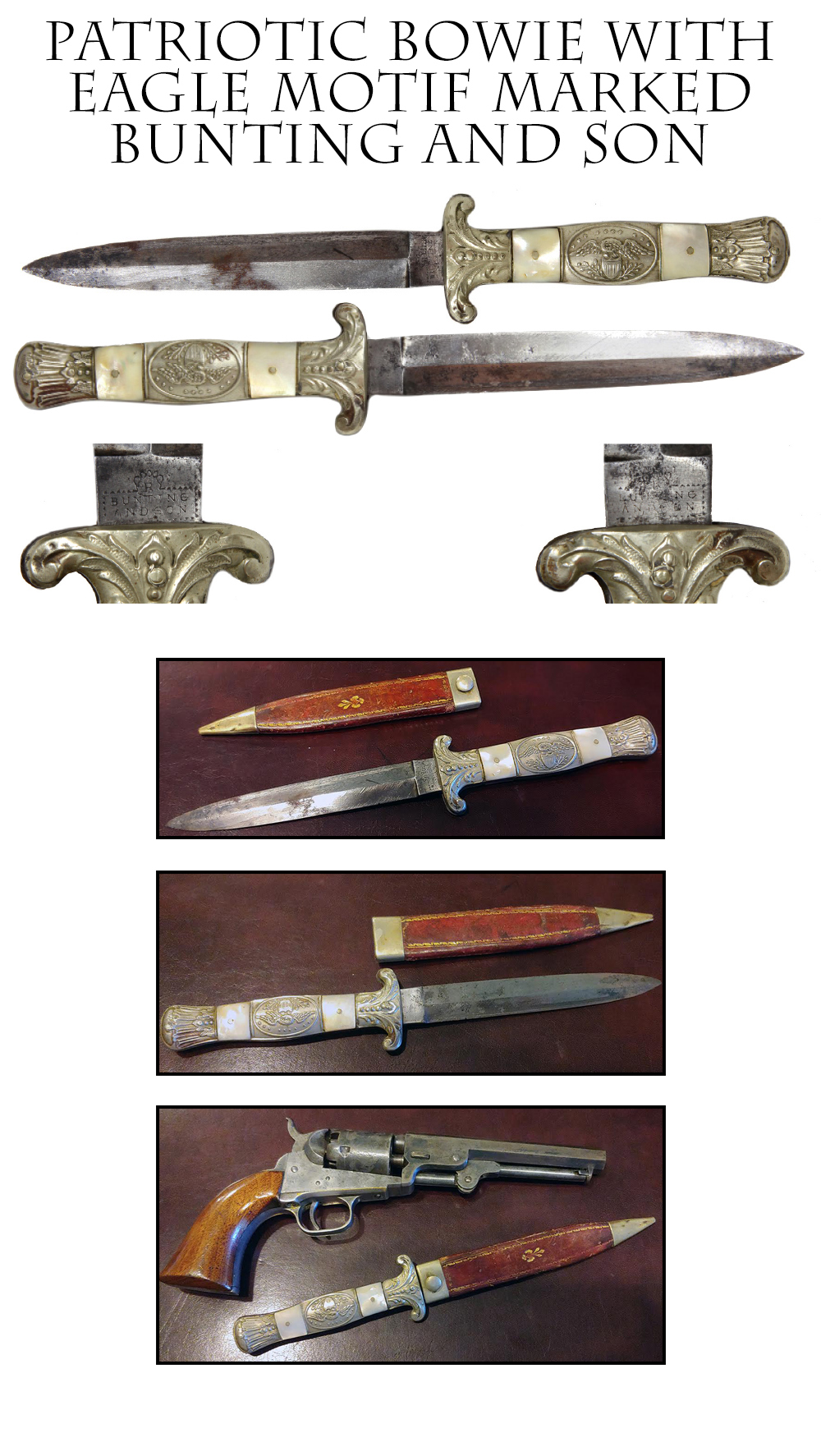
19-07-128 PATRIOTIC BOWIE WITH EAGLE MOTIF MARKED R. BUNTING AND SON: A top shelf patriotic Bowie by Robert Bunting and Son for the US market. Bunting is recorded as early as 1837 as a Sheffield maker of knives, dirks, and American hunting knives. This is a great early example of his work, measuring just under 9 inches overall. Classic German-silver and mother of pearl paneled grip with an American eagle under an arc of stars perched atop an American shield with oak and laurel branches underneath. Foliate upper and lower panels, separated by the mother of pearl sections. The blade is smooth metal with the maker name R. Bunting and Son on one side of the ricasso in a serrated border and arch. The blade shows a mix of light and dark gray and on that side has one brown area a little past midway along the blade. The other side has a little corrosion on the blade flat just forward of the ricasso and has similar blade color. I see two very tiny edge nicks, otherwise an excellent edge a point. The mother-of-pearl panels are excellent and the German silver mounts show just two tiny dents on side of the quillon. The red leatherette sheath with German silver mounts and a belt frog is likewise in excellent condition. A very showy patriotic knife made expressly for the American market, probably between 1845 and 1861. One of my favorite pieces $1,750.00
Call us @ 419-842-1863

19-07-130 ALLEN AND WHEELOCK BOOT PISTOL: A very solid and honest American made boot or muff pistol. Roughly 36 caliber. Three inch barrel. Six inches overall length. 100% original, 100% complete, and mechanically perfect. Circa 1845. Maker marked on the barrel “Allen & Wheelock”. Numbered 455. Bar hammer stamped “Allen’s Patent April 16, 1845”. $295.00 SOLD
Call us @ 419-842-1863
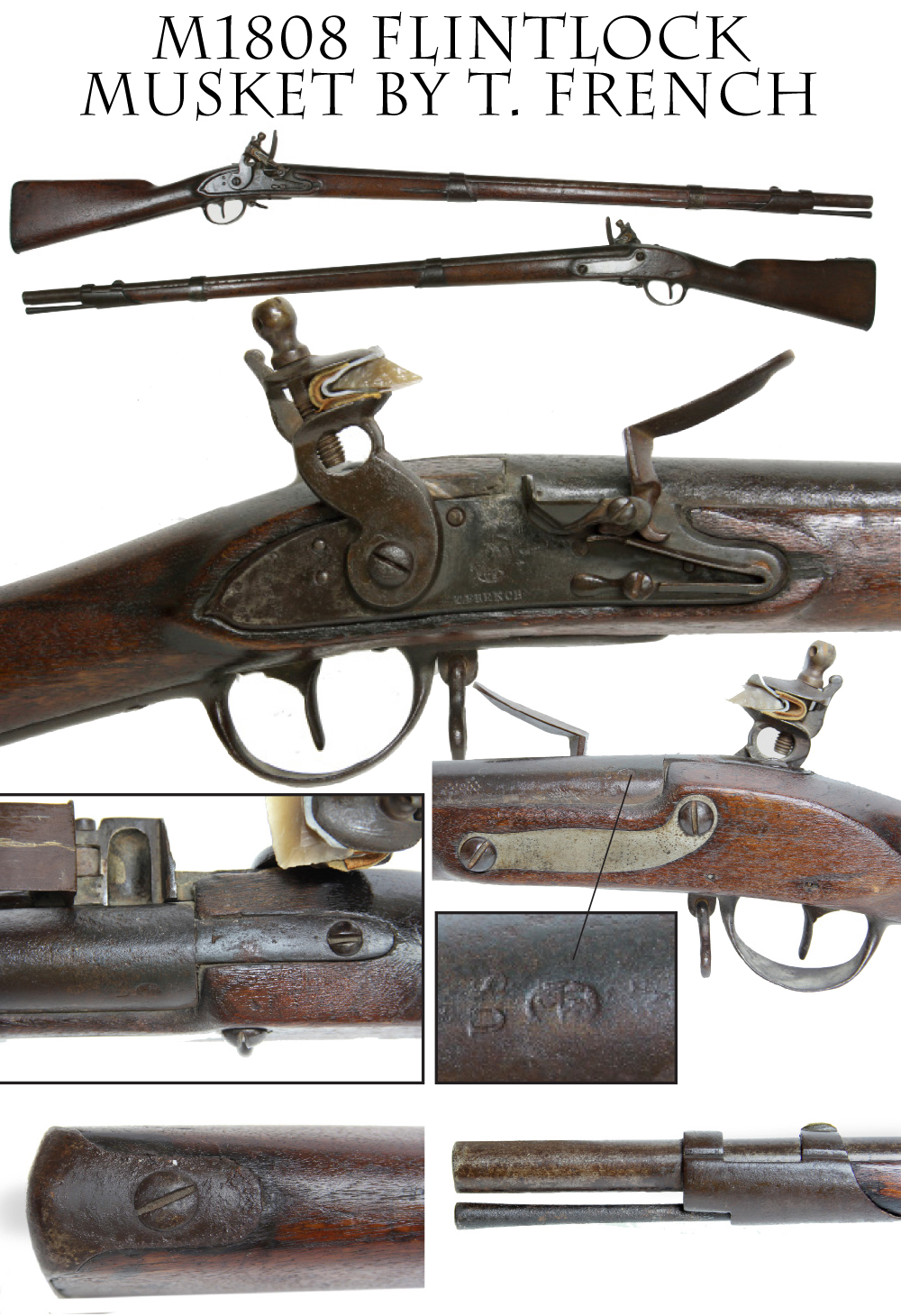
Contractors generally got a pattern gun from the nearest armory, either Springfield or Harpers Ferry. Despite setting up business with Kinsley in Canton, Mass., French and Blake were from Virginia and seem to have gotten a Harpers Ferry musket as their pattern gun. They had something like six variations of lock plate markings. This has CANTON at the rear of the plate with the date 1810, and T. FRENCH forward of the hammer, underneath an eagle perched over an oval panel with US in it. The barrel has a US federal ownership stamp and barrel viewer’s mark of an eagle’s head over CT in a sunken oval (for “contract”) and a V barrel viewer’s mark. This gun was armorer shortened to fusil length during its’ period of use. The gunsmith lightened this gun by cutting the barrel down to 35 inches and reducing the stock proportionately. He also set the bands and retaining springs to their new proper positions. Very well done. My guess is the gun probably sustained muzzle damage facilitating the need for the alteration. The wood rates very good +++. It has good edges, a tight fit, and just minor handling marks and a narrow, old gouge at the front of the lockplate. The metal preserves a crusty brown attic surface patina near the breech and on the buttplate, which has some raised crust around the edge. The barrel proofs are very legible and the barrel in general is a smooth deep brown. There is some light pitting around the breech. The hammer does not have the straight profile of the standard French contract hammers and the pan is of an earlier faceted profile rather than round. The frizzen appears to be a restoration. The touch hole is a tough call whether original or reconversion, so I will err on the conservative side and call it the latter. The rear swivel is there. The front swivel is lacking. The rod is an old old period replacement. Super appealing War of 1812 shoulder weapon. $850.00 SOLD
Call us @ 419-842-1863
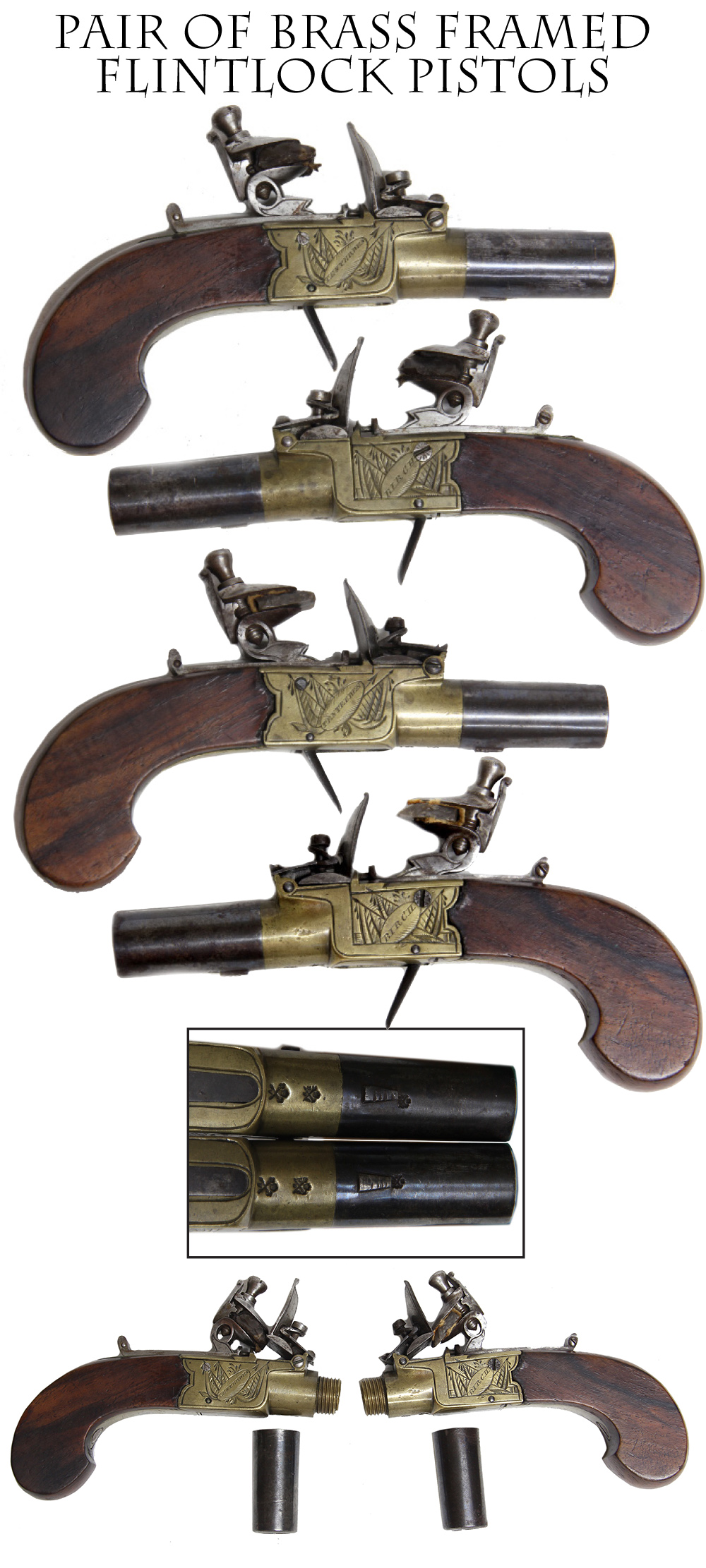
19-07-132… PAIR OF BRASS FRAME FLINTLOCK MUFF PISTOLS….A very elegant pair of flintlock pocket or muff pistols. About .50 caliber, these small pistols have folding triggers and sliding top safety latches that would make them safe to carry loaded in a pocket. The barrels are 2 inches long and screw off for loading at the breech. The grips are flat sided, excellent condition, and have just narrow shrinkage gaps from the frame on one. The frames are brass and engraved with a trophy of arms and flags on either side, with a superimposed oval shield bearing the maker’s or retailer’s name “Birch” on one side and the location “Tenterden” on the the other. The brass has a medium aged patina. The barrels on both pistols are smooth and preserve 70-80 percent of the original thin blue. Both barrels still have the short lugs on the underside used to engaged a barrel wrench. The mechanics are good. The pistols have Birmingham proofs and a Richard Birch is recorded as starting a 7-year apprenticeship as a gunmaker in Birmingham in 1758, so they might be his work, though dating around 1800. Tenterden is a small town south of London. Fine pair of early flintlocks in fine+ condition … $1,450.00 SOLD
Call us @ 419-842-1863

19-07-133 ONE OF THE RAREST CIVIL WAR MESS SETS – 1861 PATENTED AMES KNIFE, FORK AND SPOON COMBINATION UTENSILS….. The Civil War created a huge market for novelties and modern gadgets to make camp life and campaigning easier on the soldier. Several competitors marketed different patterns of combination mess gear to replace the implements provided by the various recruiting services. These Ames sets are about the hardest to find. The innovation here was to combine the knife and spoon into one unit that had small slots to engage the studs on a separate fork, locking all the pieces together. The convenience being that the soldier would not have to dig around in his haversack for the separate utensils. This set is complete and in excellent condition. The patent stamp on the handle of the fork reads “AMES’ PATENT / SEP 17 1861” The wood grips have a small “X” carved on one side, likely by a soldier to identify his set. I see many other types of patent mess sets by comparison. This is one of the very few complete Ames sets I have seen in forty five years. Fifty times rarer than the $350 Richards Patent sets. Maybe 100 times rarer! I challenge you to find another set for sale this month… $895.00 SOLD
Call us @ 419-842-1863
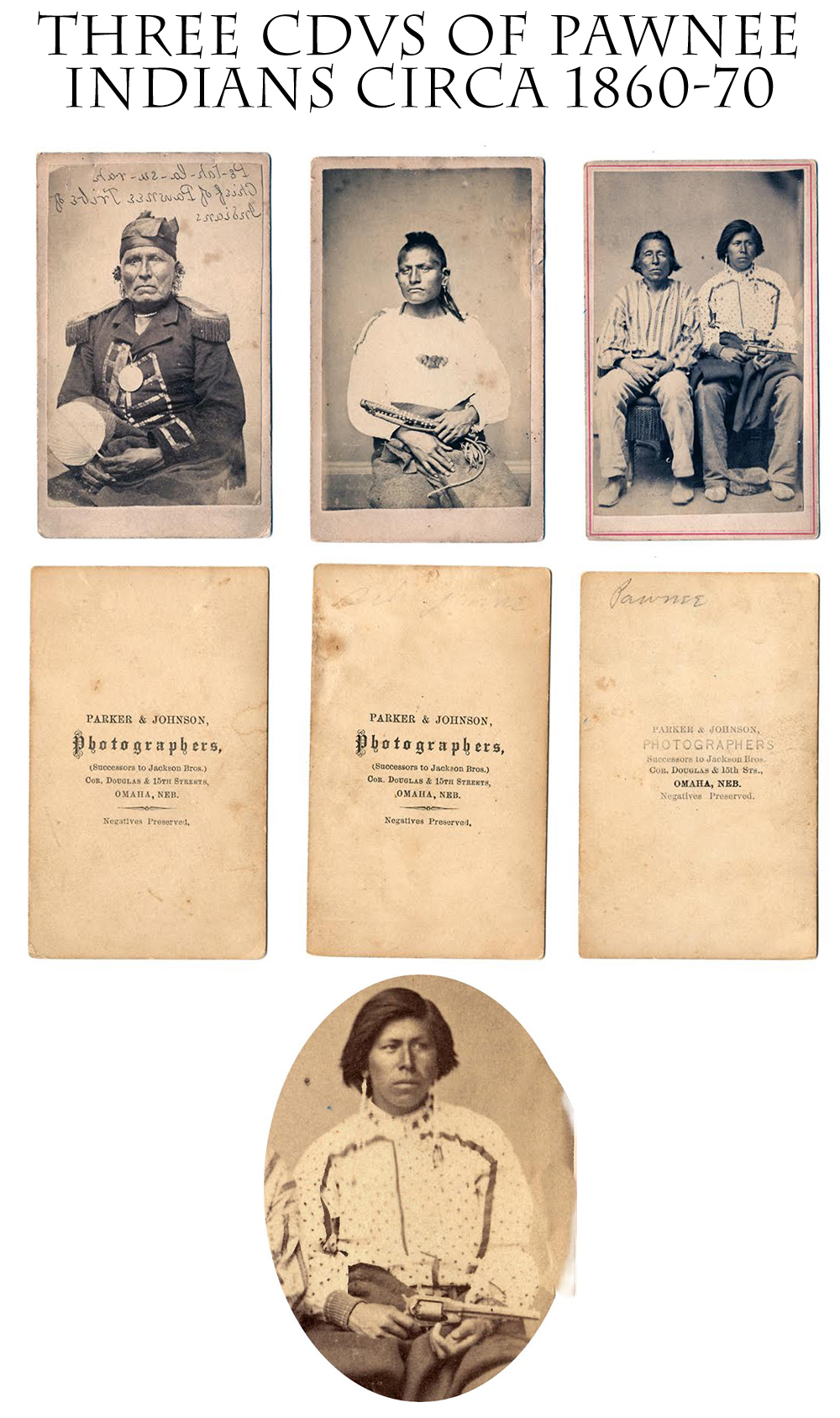
19-07-134… THREE CDVS OF PAWNEE INDIANS 1860-1870 …
All three images are by Parker and Johnson of Omaha, Nebraska, and date roughly late 1860s to 1870. While the lack of tax stamps could date the photos to 1864 or before, I think they are more likely 1866 or later. The Pawnee in Nebraska at the time were under tremendous pressure from white settlers and rival Indian tribes . The last of the tribe left Nebraska in 1875, giving us a general time frame for these photos. This fits with the fact that Charles Parker and Ira Johnson are recorded as photographers in Omaha in 1870.
Our first image is of imposing older man wearing a cloth skullcap and holding a small fan. He is seated, with a blanket pulled around his waist, and wears a militia coat with epaulets and trimmed with braid on the cuffs and an open grid-iron pattern on the chest. He prominently displays a large round medal in the center of his chest, undoubtedly a peace medal given out by the US government. The photographer identified him in the negative as, “Pe-Tah-la-su-rah / Chief of Pawnee Tribe of / Indians,” but forgot that it would show up in reverse in the albumen prints that would be mounted on the cards.
Our second image shows a Pawnee man, seated holding a quirt across his body with one hand. His loose white shirt is a little overexposed, but the tones are good on his head and hands. He wears the traditional Pawnee scalp lock that used buffalo fat to make it stand up straight. There is a faint pencil inscription on the reverse of the card that I cannot make out.
Our third image shows two Pawnee men seated side by side. They have largely adopted Caucasian dress and hairstyles. The fellow on the right, however, has gathered a garment around his waist like a blanket as do the figures in our other two photos and he holds a Remington revolver in one hand, perhaps indicating he knows that his troubles are not all behind him. An old pencil inscription on the reverse identifies them as “Pawnee.” All three photos for $1,350.00
Call us @ 419-842-1863
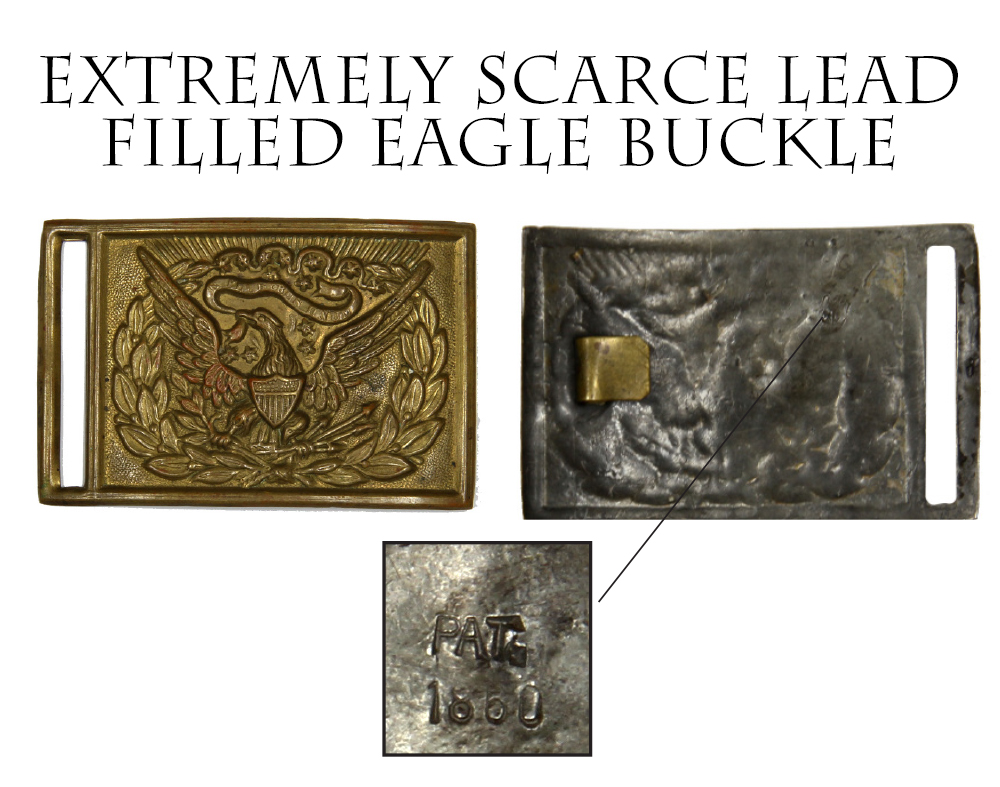
19-07-135….EXTREMELY SCARCE LEAD FILLED CIVIL WAR OFFICER’S EAGLE BUCKLE… These lead solder filled eagle plates are very scarce variants of the 1851 pattern eagle sword belt plate. Instead of being solid cast brass as seen on most examples, this pattern used a thin sheet brass die struck skin that was then filled from the rear with lead solder, much like the oval US enlisted plates. This design made them cheaper to produce, but the thin stamping and soft lead solder was not strong enough to maintain the belt slot. Consequently, the slot end of the plate broke after a short period of service. This pattern was not made after 1862 and intact specimens like this one are quite rare. Our plate shows good die work, with a legible motto on the ribband and stippled background for the eagle and wreath. The reverse of the plate also shows a very small “PAT. / 1860” stamp in the lead filling. I have had a few of these over the years but don’t recall seeing the patent stamp previously. Great early war buckle… $495.00 SOLD
Call us @ 419-842-1863
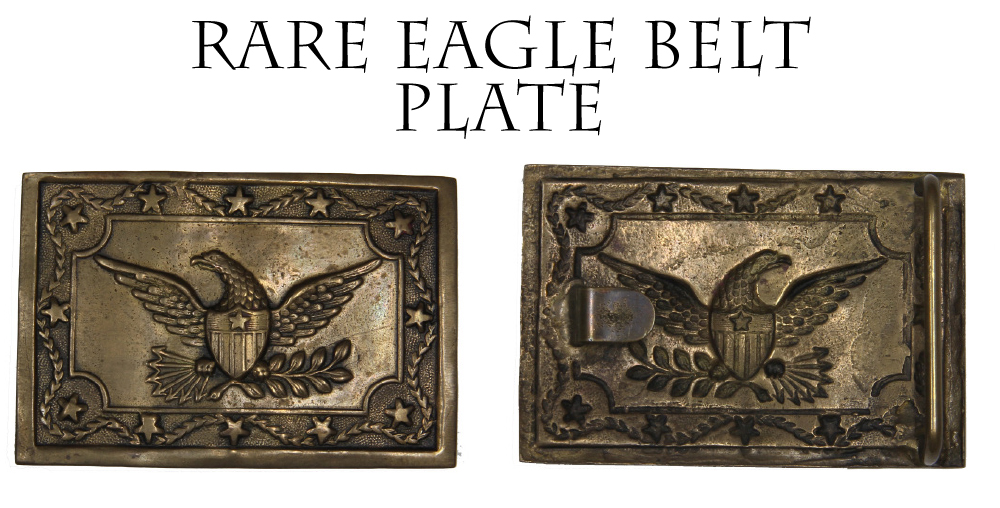
19-07-136….. RARE EAGLE BELT PLATE…These rectangular plates with an American eagle with a shield on its chest, clutching the arrows and branch, but without the overhead “glory” of the stars, clouds and rays, date roughly from 1832 to 1847. There are a large number of variants supplied by military goods dealers to militia officers and units, and the plates are collecting category of their own. This one uses a central clipped corner panel bordered by a looping rope surrounding twelve stars, with the thirteenth prominently placed on the upper center of the US shield on the eagle’s breast. This is in excellent condition with the bar and flat fastening hook in place of the reverse, with a nice patina and no dents or dings. Very handsome and very old. Closing in on it’s 200th birthday. $495.00 SOLD
Call us @ 419-842-1863

19-07-139…. RARE RARE RARE MARINE CORPS EPAULETS SIGNED HORSTMANN
A nice set of Civil War Marine officer’s full dress epaulets in their original tin carrying case. I don’t recall if I have ever offered a set of USMC epaulettes previously. These show some wear and surface dirt. The central pad inside the crescent shows that there was once a Marine insignia (letter M in the loop of a bugle), pinned in place. These are no longer present. The width of the fringe tells us the officer was a captain or lieutenant. Much of the gilding has oxidized to a dull silver, but there are bright areas here and there. The border of one strap shows some abrasion and some missing jacqueron wire. The other is very good. Each has a USMC small size screw-back button at the collar end. The undersides shows the original red leather lining of the straps and the red velvet cup crescent portions. The flat brass pivoting latches are in place and functional. Each is stamped “Horstmann Brothers & Allien” and “New York.” in the early style marking. This was the designation of the New York branch of the famous Horstmann military goods dealership from 1852 to 1876. Civil War Marine coat buttons are usually found bearing the Horstmann Bros. & Allien NY back marks and are believed to have been manufactured by Steele & Johnson under contract to Horstmann circa 1860. The original carrying case has its top, carrying handle and latch intact. The oval tin compartment intended to hold shoulder straps or knots is missing. Case is constructed of a thin tinned iron, the top shows wear and scuffing. The body shows a lot of thick country red paint added later in the 1800s. Marine Corps material from the Civil War is very seldom found. DISCOUNTED to $395.00 SOLD
Call us @ 419-842-1863
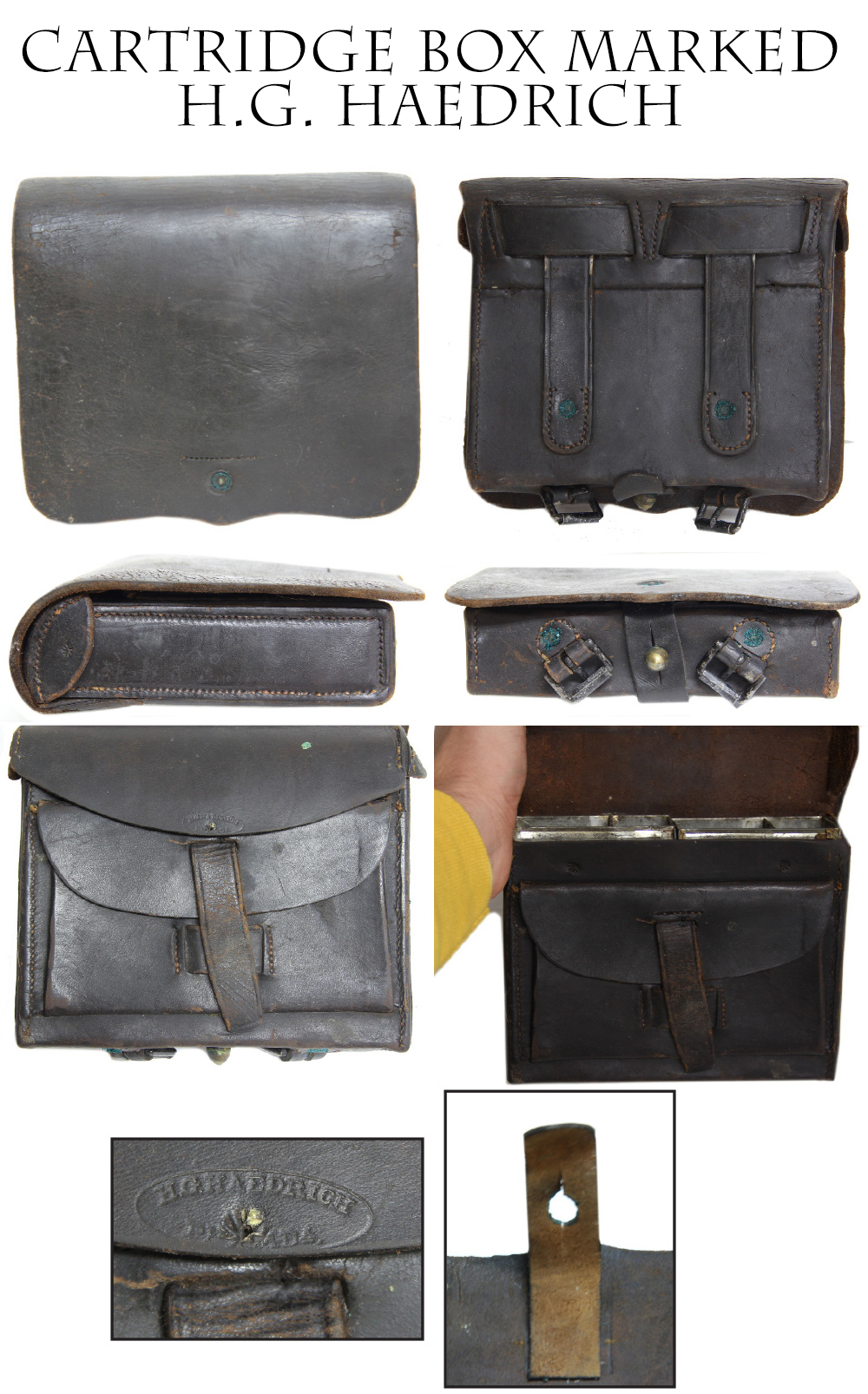
19-07-141 CARTRIDGE BOX MARKED H.G. HAEDRICH A very good 1864 pattern US infantry .58 caliber cartridge box with original tins. The oval US embossed stamp on the outer flap was intentionally flattened out, but can still be faintly seen. I don’t know why this was done, but you could speculate that the last owner was not a fan of things marked US. The leather has a very good finish overall with just some crackling along the left edge from flexing of the flap. All buckles, loops, and rivets are in place and secure. The leather latch tab is replaced. The inner implement pouch and flap are there. Both tins are present and have lots of original tinning still on them. Inner flap and side ears are very good. Some light verdigris on the rivets should be cleaned off. The “H.G. Haedrich / Philada.” maker mark is stamped on the lower edge of the inner flap over the stake mark used by the leather worker to close up the tack hole, but is crisp and legible. Haedrich is a well known Philadelphia contractor to the US government with contracts dating 1862, 1863 and 1864. Very solid and a good representative example. $365.00 SOLD
Call us @ 419-842-1863

19-07-142… SUPERB GUTTA PERCHA CASE WITH CIVILIAN AMBROTYPE The case is amazing. Near perfect and an incredibly rare design. One side has four stars, a Bible on an altar, and the Lord’s prayer in raised letters around the altar. The other side has artwork that I take to be the gates of heaven. It is a quarter-plate thermoplastic photo case with no chips or cracks, containing a deep crimson velvet facing pad and a late 1850s ambrotype of two young women seated side by side. There is a curved hairline crack in the ambrotype on the lower right, but the value is really in the superb case with a gate and lyre on one side and a scrolled central round panel on the other with stars in each corner. I don’t have my copy of the thermoplastic case catalog at hand to give its number but it is a scarce pattern. The pictures should tell the story. $295.00
Call us @ 419-842-1863
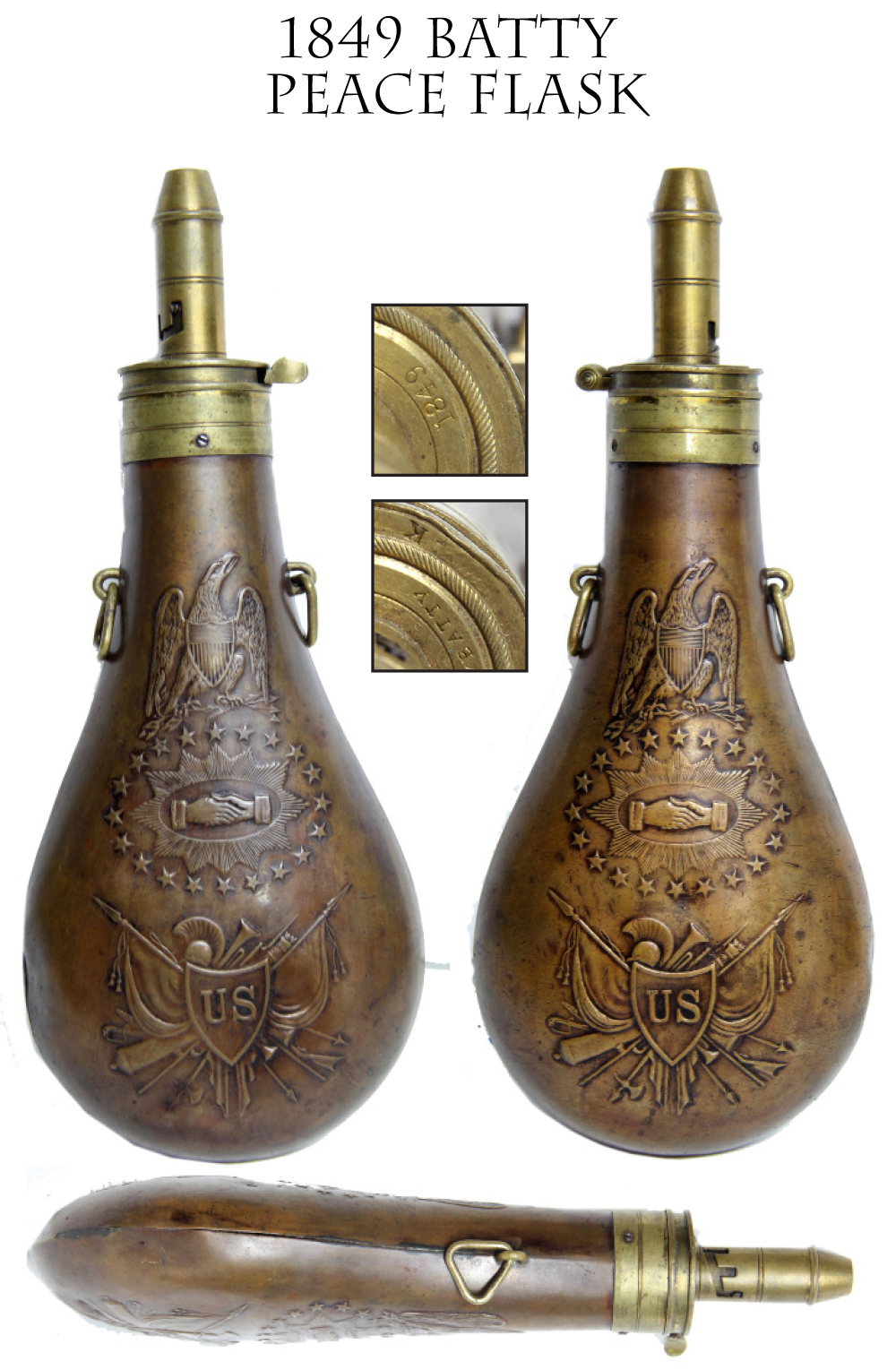
19-07-144 1849 DATED BATTY PEACE FLASK Robert Dingee had produced powder flasks for riflemen starting in 1832. Ames took over supplying an improved pattern in 1837 that featured the classic FORM of the “Peace Flask” as shown here with ours. It is an American eagle over two clasped hands in a sunburst with a trophy of arms and flags below. Batty supplied a slightly different version from 1847 to 1858. Here is an excellent example of the Batty flask. The body has one minor push near seam. The seams are good with one side being perfect, and the other side showing the FAINTEST of separation near the little push dent. It would not affect the usefulness of the flask and is only visible under the closest scrutiny. I mention it for accuracy’s sake. Both triangular carrying loops are present. The spout is excellent and the thumb latch and spring work fine. Batty’s name and date of 1859 are clearly stamped and there is a sharp little “ADK” U.S. inspector stamp on the brass top as well. The brass has a medium age patina. The copper body has an even, untouched aged patina with just the slightest lighter tone on one side from handling. A really super example of the rifleman’s powder flask. Extra handsome. $465.00 SOLD
Call us @ 419-842-1863
Layaways are Welcome
Need to split your order into multiple payments? No problem! A simple 20% earnest money deposit will hold your item for you.-acf
You can then pay it off in easy installments that fit your budget.
Read Terms Here
Items to Sell? Contact Us
I am always interested in buying ANYTHING from the American Civil War… Guns, Swords, Civil War Muskets, Knives, Uniforms, Flags, Medals, Badges, Diaries, Letters, Autographs, Buttons, photographs, tintypes, daguerreotypes, Insignia, Camp Items, Battlefield Relics, canteens, Drums, Etc… Call 419-842-1863 and ask for Dave Taylor.

